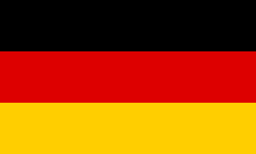Pattern
Origin & layout | Tribal motives | Ornamentale motives | Asian motives | Modern motives | Pattern | Borders
I. Origin & layout
Origin
Oriental carpets are like picture books, in which one can read, if one understands how to interpret the various patterns and ornaments.
The religions, especially Christianity (Armenian cultural area) and Islam, exerted a crucial influence on the origin of the motives and pattern of oriental carpets. In addition, the many traditions, the way of life and people's cultures and not to forget, the inspiration, creativity, fantasy and improvisation of each individual weaver has since the beginning played a crucial role.
The symbols are mostly derived from nature like plants, animals, mountains, clouds, water, skies or they are of a metaphysical nature. They reflect such things as life and death, the entrance into paradise, well-being, defence against bad influences etc.
Over time each region, city or even tribe has developed its own typical carpet pattern. Each individual pattern or motive has however for itself a special symbolism, meaning and message (sample symbolism). For example 'the Gul' - motive (right), translated as flower, is a symbol of East - West, North - South. Divided mainly in four lozenges, they vary from tribe to tribe differently. A carpet specialist can thus according to the pattern of a carpet recognize where its origin was.
In the history of central Asia it often occurred that artists were transplanted by force from their homeland into a completely different cultural area depending on the moods of despotic rulers. From this and also several voluntary migrations, original patterns were brought to different regions and areas. Beyond this, patterns were often simply copied or recreated by other tribes for purely commercial reasons.
Layout
Nearly all carpets follow a basic concept, from which one deviates only rarely. Usually they are symmetrically designed, with or without a medallion in the center, but nearly always with a circulating, more or less patterned border. This concept was determined during the era of the Safawids, one epoch between 1501 and 1722, which partly coincides with the renaissance. Manufacturers of machine-made carpets in Europe adapted the same concept.
All classical oriental carpets since then have been basically designed in this way. The strictly divided inner field represents the world order in a transformed manner and the circulating border shows the finiteness. The design is mostly according to strict symmetrical principles, which are lengthways-symmetrical or four-ways symmetrical. Among the lengthways-symmetrical concepts are nearly all prayer, paradise and Lifetree pattern carpets, and among the four-ways symmetrical are both antique and new carpets. They can be decorated with a central medallion or do completely without it. Others show several symmetrically arranged medallions.
Today one can divide the various motives into four categories: Tribal, Ornamental, Asiatic and Contemporary. However, each carpet, whether with oriental or modern design, lifts the living quality and creates a unique atmosphere.
II. Tribal motives
Tribal motives occur mainly in village, nomadic, Kelims, Caucasian, Afghan and Turkmen carpets. Learned from their parents at a young age, the weavers implement these typical patterns from memory, whereby they attach their own variants and creativity and pass it on to the next generation. With some pieces created in this way one can speak without hesitation of the purest originality. While geometrical lines, octagons and hexagons shape the basic components of the motives, creatures, plants, flowers, figures and items of everyday life symbolize the way of life and culture of the respective groups of people, usually represented in much more simple, even primitive form.
III. Ornamentale motives
Many patterns of traditional genuine carpets originated during the 16th and 17th centuries, the blossoming time of oriental carpets. Some motives were taken over from old inherited wall and miniature painting. Ever more tighter knotting with complicated designs were developed. As at that time, today's designers still draw their new drafts on graphic paper, so that the weaver can then transfer each drawn-in knot accurately. Such carpets are mostly made in larger carpet manufactories or in addition, in particular master workshops. Ornamental motives occur most frequently with traditional Persian and Turkish carpets. These are blooms, rosettes, arabesques, branches, sheets, flowers, life trees, paradise garden, vases, animal and hunt scenes, mosque motives etc.
IV. Asian motives
The basis of Asian motives is the slope to the mystical world of thoughts. Chinese symbols are to be seen either as open symbols, as with us e.g. that lucky clover, or as concealed symbols, which only the Chinese would understand. Many such symbols and motives were derived from those of Taoism and Buddhism. The most usual Asian motives are: dragon, phoenix, crane, butterflies, water, vases, beads, branches, blooms, fan, sword, lotus blossom, fish, plants etc.
V. Modern motives
Modern motives are mostly designs or compositions of western carpet designers. New Nepalese and Tibetan carpets usually have modern samples such as abstract lines, circles, points, animal skin motives, color landscapes etc. Rarely oriental carpets are designed with modern patterns. Designer carpets are either knotted, hand tufted or machine made.
VI. Pattern symbolism
VII. Borders
Normally a border consists of a few patterned strips along the exterior of the carpet. The center section, called main edging, is usually wider than the others, called side edging. In respect of the amazing variety of patterns in the inner section of the carpets it may be surprising to learn that there are fewer patterns in the borders. The large majority of all oriental carpets represent in the main edging variants of only one repetitive and alternating motive and color combination.
Here are some border samples :


